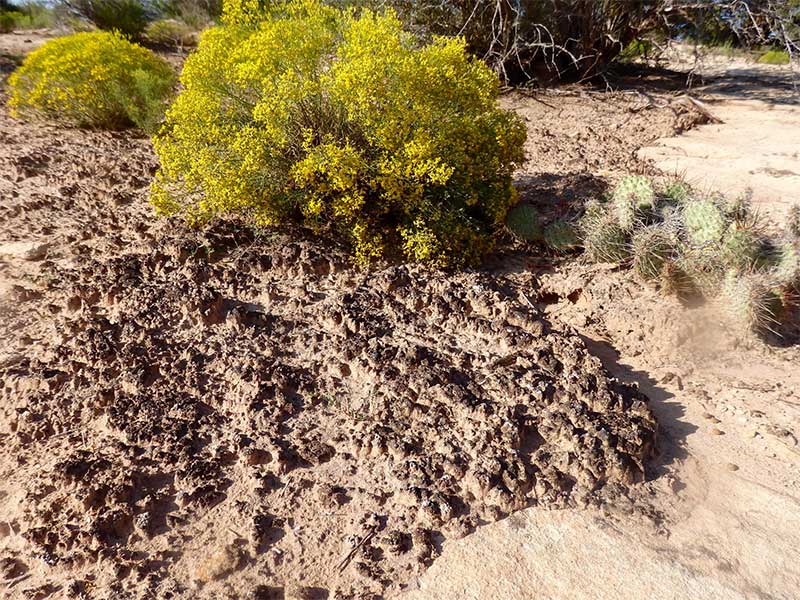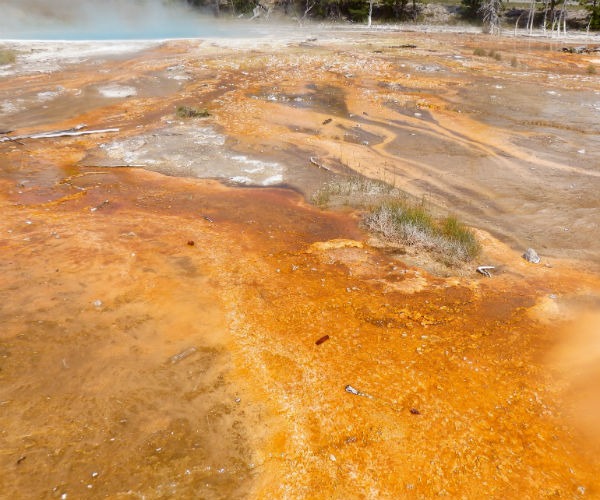Microbiomes in the Environment to Your Oral Microbiome!
by Karen Sheffler, MS, CCC-SLP, BCS-S of SwallowStudy.com
My travels this summer lead me to some pretty harsh environments as we park-hopped through some wondrous national parks, Utah state parks and national monuments. Before I dive into this blog, I want to thank our national park service. We have protected such a treasure in the United States!
During our adventure, I was on the lookout for relationships between the natural world and the human body.
I found amazing connections between our oral microbiome and the microbiomes in the high deserts of the Colorado Plateau in Utah, as well as in the seemingly inhospitable acidic and magma-heated waters of the thermal features in Yellowstone National Park, Wyoming.
The connection is at the microscopic level.
In this microbiome blog, I will explore:
1. Cryptobiotic soil from the high deserts and
2. Thermophilic bacteria from Yellowstone’s hot springs and geysers,
3. While making connections to our human oral microbiome.
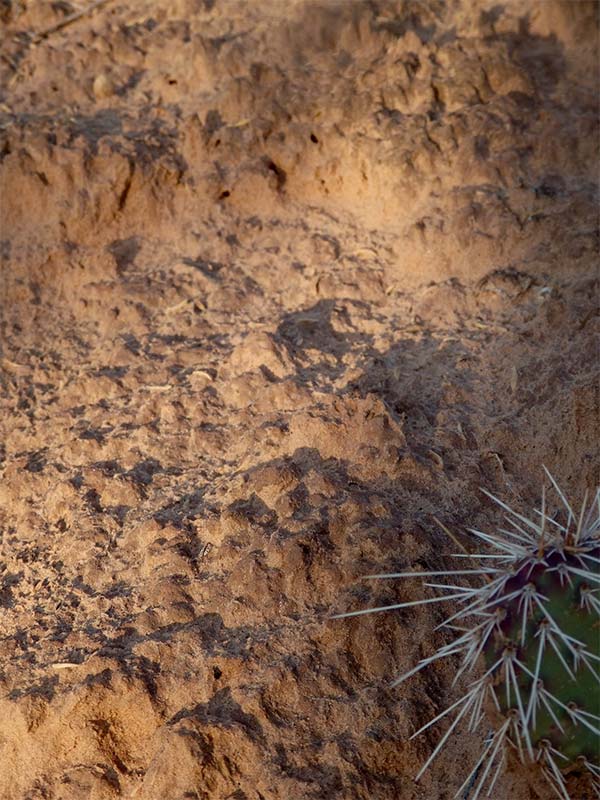
Cryptobiotic soil in Utah high desert environment is fragile like the oral microbiome.
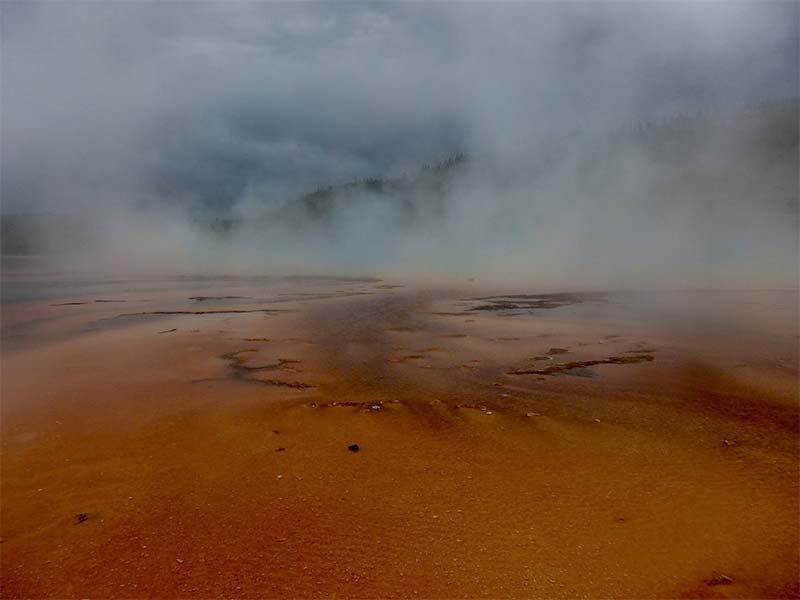
Thermophilic cynobacteria in a bacteria mat at Yellowstone National Park’s Midway Geyser Basin.
Background SwallowStudy.com Oral Hygiene & Aspiration Pneumonia
Blog Series Reading:
For background reading on oral hygiene, bacteria that can cause pneumonia, salivary chemistry, and more, please see my prior 4-part series on Oral Hygiene and Aspiration Pneumonia. I especially had fun in Part II comparing the ecosystem of Mount Saint Helens, after the 1980 eruption, to the changes in salivary flow and composition when the oral microbiome is affected by illness and hospitalization. Click Here for: Part I, Part II, Part III, and Part IV.
1. Cryptobiotic Soil from the high deserts of the Colorado Plateau
“Whenever we pull on the thread of what makes the desert system tick, we end up with soil crusts on the other end,” reports Jayne Belnap.
- Jayne Belnap is a research ecologist from Moab, UT, specializing in the biological soil crust. She works for the Department of the Interior and the United States Geological Survey (USGS).
- See the Belnap, et al (2001) technical report, “Biological Soil Crusts: Ecology and Management,” for an extensive review on the topic. When you search Belnap in Google or ResearchGate, you will find a lot of research.
- Great website by the USGS Canyonlands Research Station: www.SoilCrust.org
Of course Belnap’s quote lead me to the following question:
When we pull on the thread of what makes human health versus disease tick,
do we end up with the oral microbiome on the other end,
especially for patients with dysphagia and who are at risk for aspiration pneumonia?
But, first, let’s look further into this desert microbiome.
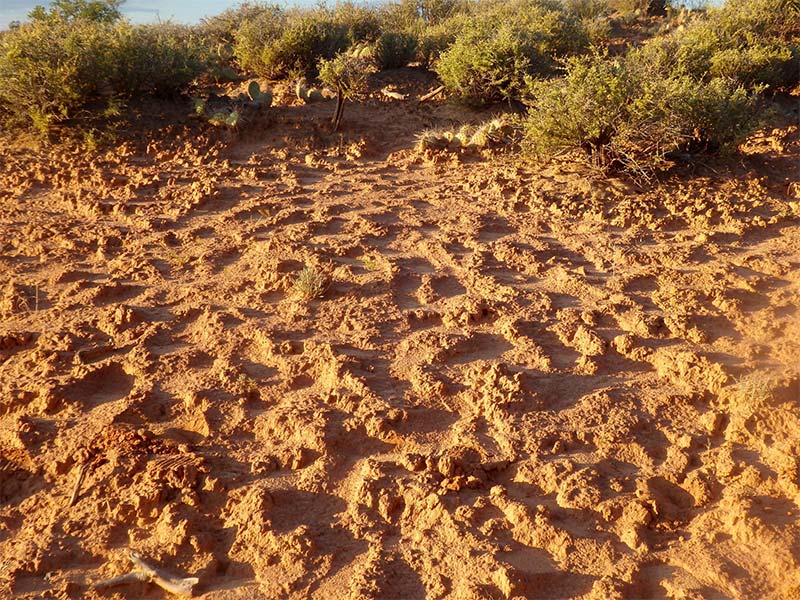
It’s not just sand and dirt. It is alive!
Cryptobiotic means “hidden life.”
These biological soil crusts are entire complex ecosystems, consisting of:
(according to the National Park Service and www.SoilCrust.org)
- Cyanobacteria (Thousands of species of cyanobacteria are known to science, but it is Microcoleus vaginatus that dominates the Colorado Plateau, per Belnap’s research displayed at Grand Staircase-Escalante National Monument/GSENM Visitor Center in Escalante, UT.),
- Green algae,
- Microfungi,
- Mosses,
- Liverworts and
- Lichens.
An immature soil crust may be the lighter in color, but that even takes 1 to 3 years to develop. The darker and more mature soil crusts may take 50-100 years to develop.
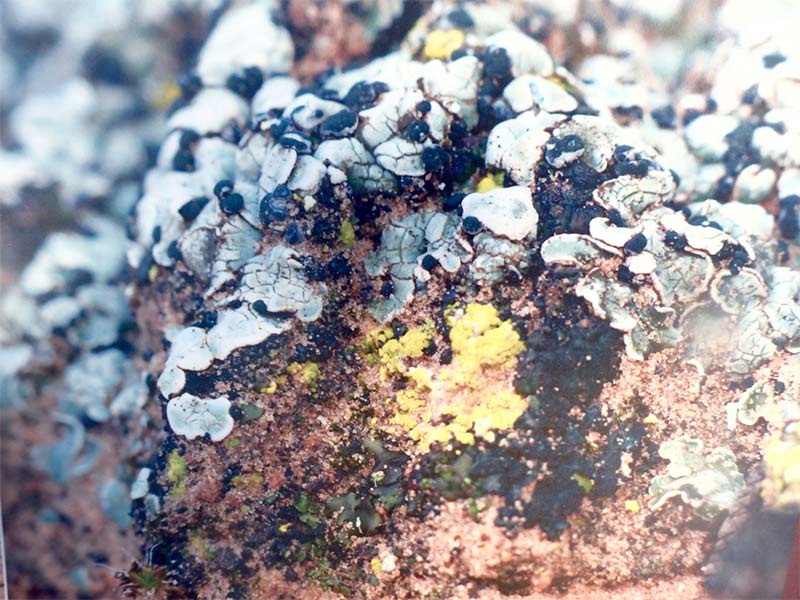
Cryptobiotic soil under a microscope.
Unfortunately, this ecosystem is fragile.
Did you know that one footstep on this biological soil crust can destroy 100 years of growth and kill these living organisms! Think about how this fragile ecosystem needs to make adaptations constantly to maintain homeostasis (see prior blog). Then, one seemingly small human action can upset that delicate balance and lead to death.
Are we seeing connections now with medicine?
I observed the soil crusts of the high deserts of Utah, but these protective, highly specialized ecosystems can be found on all continents in semiarid and arid environments. They are the foundation for the web of life in the deserts, according to Belnap. They contain the oldest living organisms and are 2 to 4 billion years old. The cyanobacteria may have been the first organisms on this planet to perform photosynthesis (per GSENM).
(For more on photosynthesis, see https://en.wikipedia.org/wiki/Oxygen#Photosynthesis_and_respiration and https://www.howplantswork.com/2009/02/16/plants-dont-convert-co2-into-o2/).
We would not be here without the cyanobacteria in cryptobiotic soils.
Cryptobiotic Soil’s Top-Ten Purposes:
- Clings to sand grains and holds them together.
- Prevents sand from being blown away or washed away.
- Catches the rain, as 9 inches or less fall in the high deserts of Utah per year. The cyanobacteria absorb up to ten time their volume in water and slowly release it back into the soil (per the USGS Fact Sheet FS-065-01: Biological Soil Crusts).
- Traps water to enhance water infiltration. This is due to the frost heaves in the winter, creating a rough and lumpy surface.
- Retards evaporation.
- Prevents erosion.
- Captures seeds, nutrients and organic matter.
- Contributes nitrogen and other organic nutrients.
- Provides a safe place for other plants to grow, converting sand and bare rock in the desert to a complex ecosystem.
- Provides a defense against invasive-non-native species.
“These crusts actually turn out to be probably one of the best lines of defense against invading, exotic annual seedlings,” per Jeff R. Johansen, PhD, soil ecologist, John Carroll University.
This quote by Johansen really got me excited, as it ties the protective mechanisms in the soil to those found in our bodies and our mouths. Let’s look for similarities in my top-ten saliva list below from a prior blog. (See “Part II” of my oral hygiene blog series for further information and references.)
Saliva’s top-ten purposes:
- Digestion – begins process of food breakdown (via amylase, lipase and proteolytic enzymes).
- Taste (via the protein gustin).
- Lubrication – of the bolus for swallowing and the oral cavity for speech (via mucin).
- Anti-viral, anti-bacterial, anti-fungal properties with a delicate balance of anti-microbials.
- Cleansing – continuous mechanical removal of bacteria, plaque and microorganisms as we swallow our saliva. The higher the salivary flow, the better the cleansing action.
- Protecting and repairing oral mucosa.
- Dental RE-mineralization – tooth enamel integrity is maintained by mineral concentrations of salivary bicarbonate and calcium phosphates (alkaline), as well as a complex salivary protein layer. This is all dependent on enough saliva flow to keep the salivary pH neutral and balanced at 6-7. Low salivary flow may drop the pH to an average of 5.3. Acids in our foods and the acidic waste end-products of the bacteria can further lower the pH.
- Caries prevention – by maintaining a neutral pH. If the saliva becomes more acidic, it will harm the tooth enamel and cause decay.
- Sheltering microorganisms that create a microbial community.
- Buffering capacity:
- Selectively prevents bacterial colonization.
- Manages thickness of biofilm and amount of bacteria
- Maintenance of salivary pH
- Neutralizes acids from bacterial waste.
As you can see, like cryptobiotic soil, saliva also maintains protective buffer, sheltering microorganisms and keeping our oral ecosystem in a healthy balance.
Everything is connected!
If you think this is as cool as I do, then read on…
2. Thermophiles of Yellowstone National Park’s Thermal Features
As I noted above there are thousands of species of cyanobacteria known to science. Cyanobacteria is also present in the bacteria mats of Yellowstone National Park’s hot springs and geysers! Yellowstone’s microorganisms used to be called “extremophiles,” for surviving under such harsh conditions.
Billions of heat-loving microorganisms, called Thermophiles, are responsible for those beautiful colors in the hot water run-off from Yellowstone’s thermal features (geysers and hot springs). There are filamentous bacteria and many types of cyanobacteria.
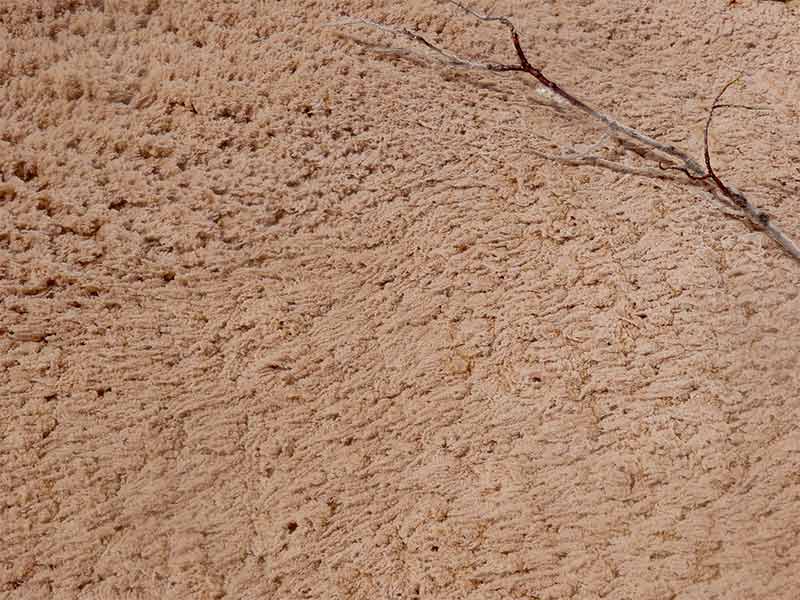
This IS alive too! Filamentous Bacteria in hot spring run-off in Mammoth Hot Springs’ Upper Terraces Area.
Filamentous bacteria are thread-like chains that feast on chemicals, basically living off that pervasive and stinky hydrogen sulfide gas that made my son wear nose protection.
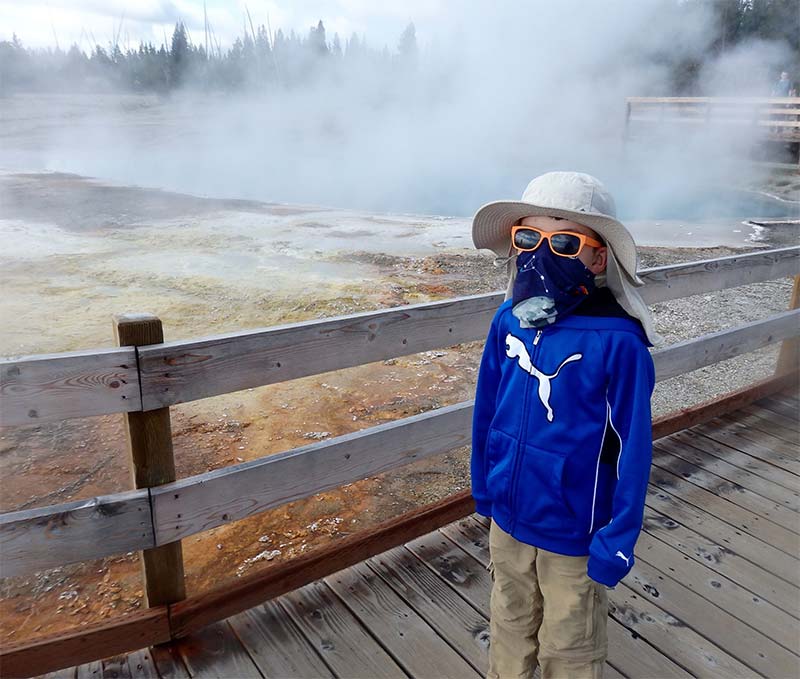
You can adapt to the stench of hydrogen sulfide gas! It is poisonous, but Filamentous bacteria love it!
The Filamentous bacteria consumes the poisonous gases, turning them into sulfuric acid, and allowing the Cyanobacteria to bloom. Cyanobacteria feasts on light for energy (photosynthesis). In the picture above, you can see the browns and oranges of the cyanobacteria in the bacteria mat near the boardwalk, where temperatures range from 75-85 degrees Fahrenheit. During my son’s Young Scientist program, we tested the temperature of bubbling hot springs and found the hottest to be at 185 degrees! One type of cyanobacteria, Phormidium, can live at temperatures close to 160 degrees Fahrenheit (about 70 degrees Celcius)!
The bacterium, Thermus aquaticus, was discovered in Yellowstone in 1966 by Dr Thomas Brock. Scientists isolated enzymes in this bacterium that were used in testing for the virus that causes AIDS. Scientists also extracted an enzyme in Thermus aquaticus that contributed to the development of DNA “finger-printing.” We need to protect these areas, not just because they are amazing and beautiful, but also for the good of humanity.
Thermoacidophiles in Yellowstone’s Sulpur Caldron thrive in an acidic environment that would be deadly to humans. The pH of Sulphur Caldron is 1, which is 10 times more acidic than lemon juice.
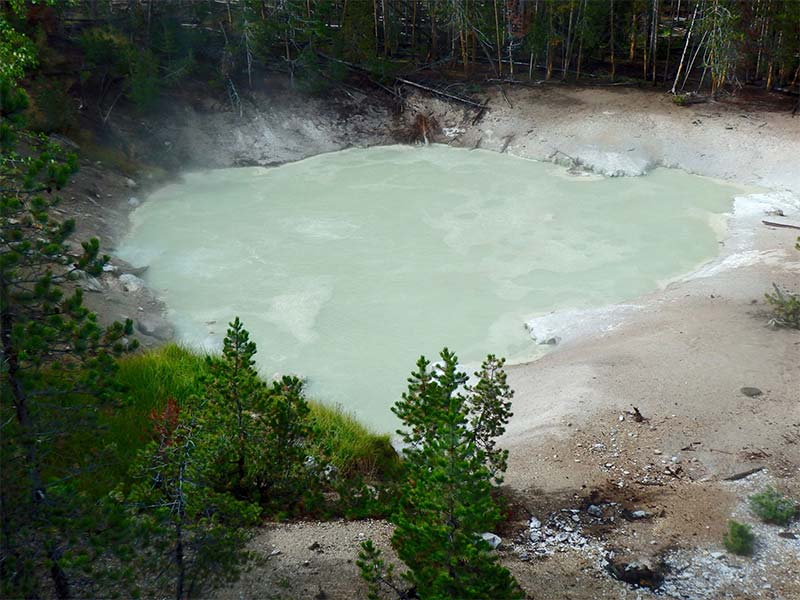
Sulphur Caldron has a pH of 1, just above battery acid. Yet Thermoacidophiles can live there!
If microbes can survive in all of these harsh conditions, could there be life elsewhere in the universe? NASA sponsored the information boards at Yellowstone’s Midway Geyser Basin, as astromicrobiologists are studying Yellowstone’s microbiomes to help them understand how life arose and diversified billlions of years ago and to offer clues to search for life on other planets and moons!
These primitive life forms have been on this earth for almost four billion years. How have these microorganisms adapted to their environment? With our rapidly changing environment, these adaptations may give us a few pointers in the future! Again, this is a crucial area of study, not just to find life on another planet, but also for society and human health.
Yellowstone was an eyeopener, showing me that microbes are tough, adaptable, and resiliant! This is not good news for healthcare providers fighting pathogenic bacteria.
How can we keep the oral microbiome in a healthy balance, and prevent harboring tough pathogenic bacteria?
3. Human oral microbiome
In 2001, Joshua Lederberg coined the term “oral microbiome” to label the complex ecology that inhabits our oral cavity, as well as in all its related extensions. We make a great warm environment for microbes! The Human Oral Microbiome Project (www.HOMD.org), as explained by Dewhirst, et al (2010), set out to create a database classifying the microbes of the teeth, gingival sulcus, gingiva, tongue, cheek, lip, hard palate, soft palate, tonsils, pharynx, esophagus (stopping at the distal esophagus), eustachian tube, middle ear, trachea, lungs, nasal passages, and sinuses. I did see cyanobacteria mentioned in that article. As a speech-language pathologist specializing in swallowing and swallowing disorders, I am not an expert in oral microbiology, but with the help of others who specialize in this, I hope to understand it better.
Dewhirst, et al (2010, p 5002) note: “The oral cavity is a major gateway to the human body.”
Dewhirst, et al (2010) referred to Awano, et al’s article from 2008 when pointing to the clear connection between the oral cavity and the lungs, where pathogenic oral bacteria can cause pneumonia.
Again, please refer to my 4-part series on Oral Hygiene and Aspiration Pneumonia for further discussion and references.
Life on the Edge – in the Desert and in the Hospital?
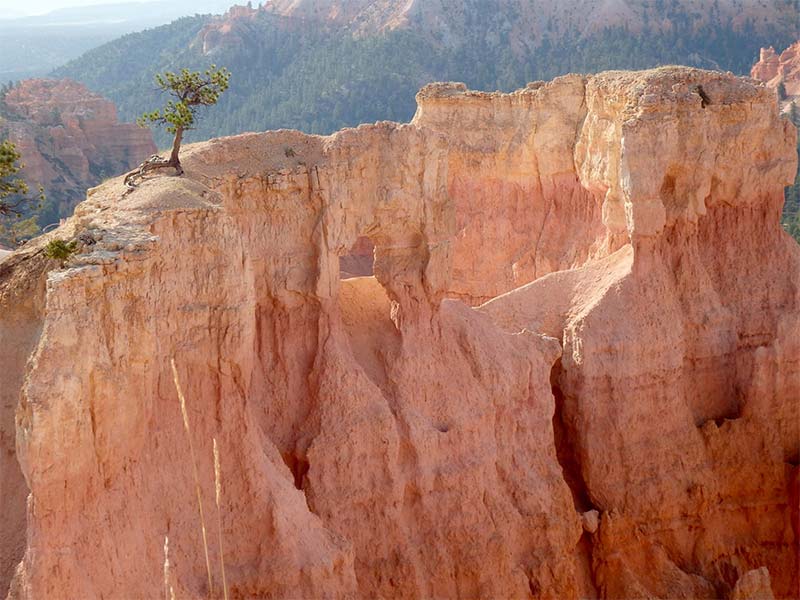
Life on the top of a Hoodoo at Bryce Canyon National Park.

Will this new life survive?
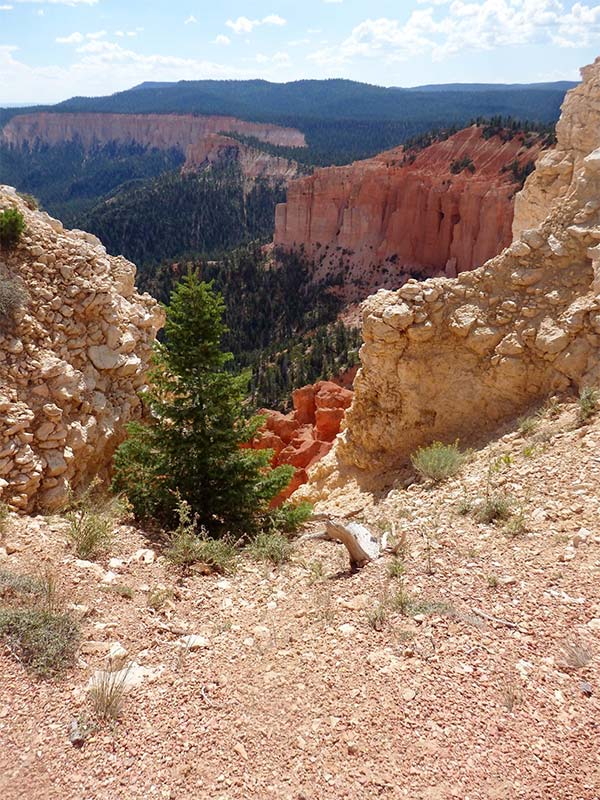
What allows one to survive while another one perishes. The answers may be microscopic.
The plants in the desert live life on the edge, but the cryptobiotic soil helps them survive. Plants have had to make many adaptations to survive, like shallow root systems.
Life in an intensive care unit for a critically ill patient may be life on the edge as well. Frequently we say, “that was the straw that broke the camel’s back,” meaning that last infection or final event was what tipped the patient over the edge.
Can the patient compensate or adapt to regain a homeostasis?
What can we do as healthcare providers to foster the return of homeostasis and our natural ecosystems that help us survive?
There is a complex ecology endemic to the high deserts of Utah and the hot springs of Yellowstone, just as there is a complex system of microflora and chemistry endemic to the healthy human (https://en.wikipedia.org/wiki/Endemism).
As suggested by Dr Johansen, the soil ecologist above, it is a healthy balanced ecosystem that keeps out the harmful invasive plants or pathogenic microbes.
If we provide good oral hygiene, replace healthy flora, and do things that have been proven to prevent pneumonia (like mobilize the patient and keep the head of the bed elevated to 45 degrees at all times), then can we give the person with a critical illness a fighting chance at adaptation and survival? We have to stop using the term “oral care,” as this is not a strong enough term. Some have suggested: oral infection control and oral decontamination.
This effort needs a catchy slogan!
There are catchy slogans across Utah (from Canyonlands National Park and Dead Horse Point State Park to Zion National Park), educating visitors to protect the fragile soil:
“Don’t Bust the Crust!”
“Don’t Hurt the Dirt!”
We need a catchy slogan to remind healthcare providers to brush the patient’s teeth, use mouthwash, and prevent the build-up of nasty oral pathogenic bacteria that make our patients get sick with pneumonia. Help! These slogans don’t cut-it, but it was the best my husband could do on short notice!
“Don’t ignora the flora!”
“Don’t let the mouth go south!”
Thanks for reading, and please share your wisdom and slogan ideas!! Continue to make and share your own connections to our natural world.
References:
The above information on Cryptobiotic soil and Thermophilic bacteria was obtained at the following parks (August 2015):
- Dead Horse Point State Park Visitor Center (https://www.stateparks.utah.gov/parks/dead-horse/)
- Grand Staircase-Escalante National Monument (GSENM) Visitor Center in Escalante, UT. (https://www.blm.gov/ut/st/en/fo/grand_staircase-escalante.html). The Belnap and Johansen quotes above appeared at this visitor center, where they had the most extensive exploration of biologic soil of any of the parks/monuments.
- Canyonlands National Park Visitor Center and interpretive trail on the Mesa Arch Trail (https://www.nps.gov/cany/index.htm).
- Arches National Park Visitor Center (https://www.nps.gov/arch/index.htm).
- Yellowstone National Park Visitor Center, Old Faithful Trail Guide, and Junior Scientist Program (https://www.nps.gov/yell/index.htm)
Other references:
Awano, S., Ansai, T., Takata, Y., Soh, I., Akifusa, S., Hamasaki, T. A., et al (2008). Oral health and mortality risk from pneumonia in the elderly. Journal of Dental Research, 87, 334–339.
Dewhirst, F.E., Chen, T., Izard, J., Paster, B.J., Tanner, A.C., Yu, W.H., Lakshmanan, A., Wade, W.G. (2010). The human oral microbiome. Journal of Bacteriology, 192 (19), 5002-5017.doi: 10.1128/JB.00542-10. Pub Med Free text
Lederberg, J., & Mccray, A.T. (2001). Ome sweet ’omics—a genealogical treasury of words. Scientist, 15, 8–10.


